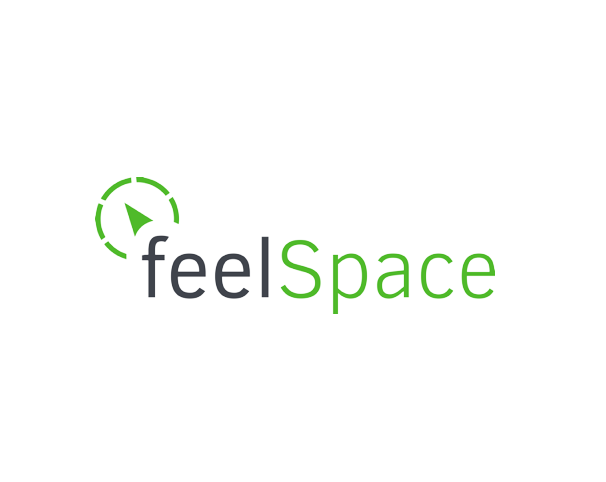Project partner feelSpace

Who are we?
The feelSpace GmbH has its roots in research at the University of Osnabrück. In 2005, Prof. Peter König from the Cognitive Science program initiated the project of the same name. The project aimed to explore whether humans can learn a new sense. A tactile compass belt was created as the chosen means to convey information about the magnetic north.
During studies on the "Nordsinn" (North Sense), it was found that the belt's vibration signal was very intuitively perceived by users. Additionally, the belt proved to be a valuable aid for blind participants in daily orientation.
To make the solution accessible to as many people as possible, Silke Kärcher, Jessika Meignan, and Susan Wache founded feelSpace GmbH. The company developed the naviGürtel® to market readiness, creating the world's first tangible navigation device. The belt is worn around the waist and provides directional signals through vibration stimuli to users.
In the development of the naviGürtel®, we gained a lot of expertise in vibration motors, tactile stimuli, and product development. Today, we use this knowledge to develop haptic wearables for various user groups, always prioritizing creating value for users, making life easier, and improving quality of life.
What are our tasks in the project?
In the "Parkinson Vibrating Socks" project, we are developing a small device for people with Parkinson's disease. This device is worn on the body and detects, through a sensor, whether the person is experiencing difficulties while walking and heading towards a "Freeze." In the phenomenon of "Freezing of Gait," individuals suddenly freeze, sometimes in the middle of a step, leading to a fall. Our device aims to detect this freezing in time and end it with a vibration stimulus ("Cue"), allowing the person to take the next step and avoid a fall.
The idea of ending "frozen" movement with a stimulus, or "Cue," is not new. Research has long been exploring this concept, demonstrating its effectiveness in helping individuals. Devices that provide visual cues (e.g., walking sticks projecting a laser line on the ground) are already in circulation. However, these need to be triggered by the individuals themselves in the acute situation. With the intelligent sensors we are developing, our device can autonomously recognize if the user is heading towards a freeze and react accordingly.
Why a solution with vibration?
The beauty of vibration solutions is that they are generally inconspicuous and unobtrusive. They can usually be worn under clothing (like our naviGürtel® and the device we are developing as part of Parkinson Vibrating Socks). This ensures that users are not stigmatized as "needy" by the device. Vibration stimuli also help without burdening the important senses of "sight" and "hearing." That means users can have their eyes, ears, and hands free while on the go. With the naviGürtel®, we experience daily how many users feel safer simply by wearing the device, knowing that they can quickly orient themselves and safely reach their destination in any situation. With the device we are developing in this project, we aim to create something similar for people with Parkinson's – the assurance that they won't be suddenly stopped and completely thrown off track by a freeze while on the move. This allows users to remain calm when experiencing walking difficulties, knowing that the blockage will resolve.
To achieve this for future users, a lot of research and development work is, of course, necessary. Intensive contact with those affected is needed to precisely understand how the device must function to provide the highest possible benefit. Therefore, we are excited to be part of the "Parkinson Vibrating Socks" project. In this strong consortium, we aim to develop an optimal solution together with many competent partners. This way, people affected by Parkinson's can move forward as freely as possible.


